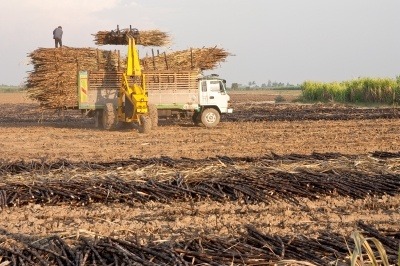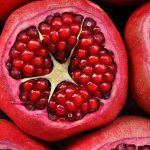
Sugarcane is a major industrial crop which widely cultivated throughout much of the world. In the beverage industry, sugarcane juice (SCJ) is one of the most important components. As a beverage in its own right, it is cheap and popular, often being served at restaurants and roadside stalls throughout the Asian continent during the harvesting season and processing season (Huang et al., 2015).
Sugarcane juice contains mainly sugar as sucrose. It also contains polyphenolic compounds, ascorbic acid, minerals, fine bagasse particles and other pigments (Kaavya et al., 2019).
Fermentation Issues
Being loaded with sugar is always an issue for anybody looking to make use of such rich syrups. As soon as sugar cane is extracted it will begin to ferment. There are methods to overcome not just this but the rapid browning that occurs but we will look at that later.
In the first instance, fermentation is usually microbial. The sugarcane takes on a sour note after just a few hours (Yusof et al., 2000). Most processors drop the pH by adding a cheap food-grade acid which not only inhibits browning but also reduces the opportunities for bacterial and yeast growth (Belitz et al., 2009).
Clarification Of Sugarcane Juice
Clarification is one of the key steps in sugar processing. Why? Success is directly related to the performance of subsequent processing steps in the production of sugar and the final quality. The clarification process removes all the non-sugar compounds which include proteins and polysaccharides, any gums, all the minerals and any coloring compounds. All these compounds need to be removed to prevent colour generation or carryover of any colour into the final product.
The sulphitation method is the standard process for clarifying sugarcane juice. It involves bubbling gaseous sulphur dioxide (SO2) into the juice until an acidic pH condition of between 3.8 and 4.2 is reached. Subsequently, neutralisation to between pH 7.0 and 7.2 is achieved by the addition of hydrated lime (Ca(OH)2). The alkalinisation of the sulphite juice leads to the formation of calcium sulphite, which precipitates and adsorbs undesirable compounds from the juice. Then, the juice is heated to 100–105°C and sent through sedimenters to remove the precipitates (Honig, 1953).
Keeping Sugarcane Juice Nice And Sweet
A recent piece of research appears to have solved the issue that afflicts the processing of sugarcane juice – stopping it from fermenting and turning brown as soon as it sees the ‘light of day’. Commercial losses from discolouration are considerable.
As is typical with juices, once they are pressed and extracted, they turn rapidly brown when exposed to air because of a combination of events usually involving free polyphenoloxidase which enzymatically catalyses browning reactions and other released componentry involved in the second type of reactions, a non-enzymatic generation of such colour (Eggleston, 2002; Qudsieh et al., 2002). In this study (Mishra et al., 2011), a combination of gamma radiation (5 kGy) with preservatives and relatively low storage temperatures of 10°C, was able to preserve juice and maintain colour for at least a month. It also helped preserve it for nearly two weeks when stored at 26°C. Typical beverage preservatives such as citric acid (0.3% w/w), sodium benzoate (0.015%), potassium sorbate (0.025%) and sucrose (10%w/w) were used. The process helped maintain antioxidant activity as measured by both free radical and nitrite scavenging activity, and reducing power.
Such a technology should help in the marketing and product development of an important product given that there is a move to more natural sweetening systems in beverages. Generally, sugar cane needed to be concentrated rapidly after extraction which in turn readily led to browning. Attempts to exploit freeze concentration have been made to minimise this but the process is not yet quick enough (Rane, 2005) although membrane distillation may be preferable (Cojocaru and Khayet, 2011).
References
(2005). Color formation and removal – Options for the sugar and sugar refining industries: a review. Zuckerindustrie, 130, pp. 470–475.
& (1993). Cane Sugar Handbook. A Manual for Cane Sugar Manufacturers and Their Chemists, 12th edn. New York: John Wiley & Sons.
Cojocaru, C. Khayet, M. (2011) Sweeping gas membrane distillation of sucrose aqueous solutions: Response surface modeling and optimization. Sep. Purific. Technol. 81(1) pp. 12-24
Eggleston, G. (2002) Deterioration of cane juice—sources and indicators. Food Chem. 78 pp. 95–103
Eissa, H.A., A.N. Shehata, M.T. Ramadan, and H.S. Ali. 2010. Preservation of sugarcane juice by canning effect of thermal and chemical pre-treatments on the enzymatic browning of sugarcane juice. Journal of American Science 6(9): pp. 883–888
George, P., James Meade, and C.P. Chen. (1997) Cane sugar handbook, 17th ed, 124–129. New York: Wiley.
(1953). Principles of Sugar Technology. New York: Elsevier Publishing Company.
, & (2015). High pressure pasteurization of sugarcane juice: evaluation of microbiological shelf life and quality evolution during refrigerated storage. Food and Bioprocess Technology, 8, pp. 2483–2494 (Article).
, , , & (2019). Sugarcane juice preservation: a critical review of the state of the art and way forward. Sugar Tech, 21, pp. 9–19 (Article)
Mishra, B.B., Gautam, S., Sharma, A. (2011) Shelf Life Extension of Sugarcane Juice Using Preservatives and Gamma Radiation Processing. J. Food Sci., 76(8) pp. 573–578 (Article)
Morais, I., G. De Andrade, I.V. Matos, A.C. Rocheto, N.K. Valadão, and R.R. Petrus. 2014. Standardization of pasteurized sugarcane juice. International Journal of Agriculture Innovations and Research 2(5): pp. 794–797
, , , . (2002) Effect of maturity on chlorophyll, tannin, color, and polyphenol oxidase (PPO) activity of sugarcane juice (Saccharum officinarum Var. Yellow Cane). J Agri Food Chem 50 pp. 1615–8 (Article)
Rane, M.V., Jabade, S.K. (2005). Freeze concentration of sugarcane juice in a jaggery making process. Appl. Therm. Eng., 25 pp. 2122-2137.
Singh, P., Shahi, H.N., Suman, A., Jain, P.C. (2002) Sugarcane juice concentrate: preparation, preservation and storage. J. Food Sci. Technol. 39 pp. 96–8.

There is a more natural way to treat cane juice and extend its shelf life. Have a look at http://www.resis.com.au
Dear Sonya,
How is it that you preserve the sugarcane juice without preservatives or gamma radiation or pasteurization?
Hi Sonya,
in this study, the sugarcane juice was treated by exposure to gamma radiation at a dose rate of 5.5 kGy/h at the Food technology Division, Bhabha Atomic Research centre in Mumbai, India. The study itself reports on the application of different dose rates from 1 to 10 kGy. With the help of preservatives, the minimum dosage required for complete destruction of microorganisms was 5 kGy. The preservative system found to be most effective was 0.3%w/w vitric acid, 0.015% w/w sodium benzoate, and 0.025% w/w potassium sorbate and 10% sucrose. The shelf-life increased by 15 days at ambient storage and 35 days at 10 Centigrade.